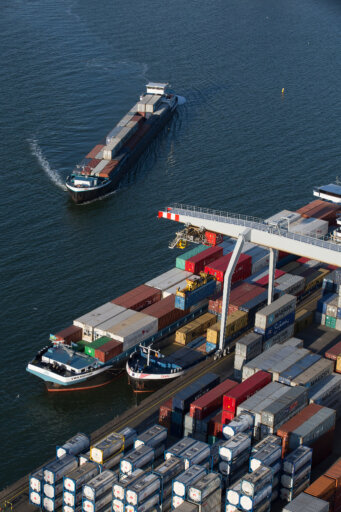Three Advantages of Katoen Natie’s Strategic Position in Pet Food Logistics
Border Inspection Post (BIP)
At Katoen Natie Ghent, we have a Border Inspection Post (BIP) for pet food within our warehouse facility. This serves several important purposes to ensure the safety, quality, and compliance of pet food products entering Europe.
- Food Safety and Quality Assurance: Pet food must meet specific safety and quality standards. A BIP allows for the inspection of pet food products to verify compliance with the country’s regulations and standards for ingredients, labeling, and production processes.
- Regulatory Compliance: Different countries have varying regulations regarding pet food importation. This includes verifying proper documentation, labeling, and ingredient specifications.
- Customs and Import Duties: Border Inspection Posts also play a role in enforcing customs and import duties on imported pet food. Katoen Natie can provide these services at our Ghent platform to facilitate a smoother supply chain flow.

Border Inspection Post: Mid inspection process ensuring compliance with all required regulations and standards
In summary, a Border Inspection Post for pet food is a critical component of a country’s regulatory framework, ensuring that imported pet food products meet established safety and quality standards while also addressing Customs compliance.
Inland Barges
Imported Pet Food must be transported from the Port of Antwerp to our Ghent Multi-Customer platform via Inland Barges. While inland barges offer various advantages, their applicability depends on factors such as the availability and condition of waterways and destination points. In regions with well-developed inland waterway systems, barges can play a crucial role in the supply chain management of goods. Some of the key advantages include:
- Cost-Effectiveness: Inland barge transportation is often more cost-effective than road or rail transport, especially for large and bulky cargo. Barges can carry a significant amount of cargo in a single trip, reducing the overall cost per ton-mile.
- Sustainability: Barges are more fuel-efficient than trucks and trains on a per-ton basis. The lower fuel consumption per unit of cargo makes inland barge transportation an environmentally friendlier option, contributing to reduced greenhouse gas emissions.
- Reduced Congestion: Barges operate on rivers and canals, providing a separate and often underutilized transportation corridor. This helps alleviate congestion on roads and railways, leading to smoother traffic flow in urban areas.
- High Capacity: Inland barges have a high cargo capacity, allowing them to transport large volumes of goods in a single journey. This makes them particularly suitable for containers, bulk commodities, and raw materials.

The Ghent Container Yard Depot
A container yard depot, also known as a container depot or container yard, provides essential services for the storage, maintenance, and handling of shipping containers. There are several advantages associated with the use of a container yard depot in the shipping and Supply Chain:
- Intermodal Connectivity: Container yards are typically strategically located near ports, rail terminals, and major highways. This facilitates seamless intermodal transportation.
- Transshipment Hub: Container yard depots often serve as transshipment hubs for intermodal transportation. This facilitates the smooth flow of cargo between ships, trucks, and trains.
- Reduced Congestion: By efficiently managing container movements, container yards contribute to reducing congestion at ports and terminals. This helps to streamline the overall supply chain.
In summary, container yard depots play a crucial role in optimizing the handling of shipping containers, contributing to the efficiency, security, and reliability of the global supply chain. Their strategic location and services support the smooth flow of goods.
In a world where efficiency, sustainability and accessibility for warehousing operations is important, Katoen Natie’s strategic multi-customer platform offers a seamless and cost efficient solution for Pet Food businesses looking to leverage the economic advantages of this thriving region.
For further insights and updates on the evolving landscape of Pet Food and Pet Care, let’s stay connected.
Bart Versprille